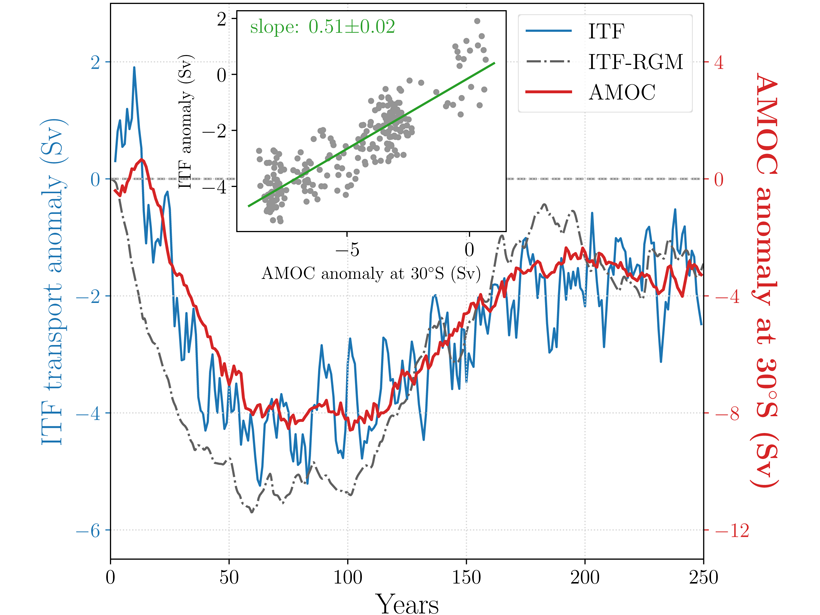Source: Geophysical Research Letters
The Indonesian seas permit the only equatorial link between two major ocean basins, and so provides a pathway for inter-ocean exchange of mass, heat and freshwater between the Pacific and the Indian Oceans that plays a fundamental role in the coupled ocean and climate system. In general, changes in the strength of this Indonesian Throughflow (ITF) are thought to be primarily driven by regional forcing related to winds and rainfall in the Indo-Pacific. However, Sun and Thompson [2020] show that, at least on centennial time scales, remote forcing in the high latitude North Atlantic is responsible for driving changes in the ITF.
Using idealized models and various coupled-climate models, the study finds that transient changes in the ITF and the Atlantic Meridional Overturning Circulation (AMOC) are dynamically linked (see figure). In particular, the projected centennial scale weakening of the ITF through enhanced greenhouse gas forcing in the 21st century is attributed to weakening of the AMOC that is transmitted via oceanic planetary waves. Hence, this teleconnection from the high-latitude North Atlantic could thus play a key role in regulating the future tropical climate system of the Indo-Pacific.
Citation: Sun, S., & Thompson, A. F. [2020]. Centennial changes in the Indonesian Throughflow connected to the Atlantic meridional overturning circulation: The ocean’s transient conveyor belt. Geophysical Research Letters, 47, e2020GL090615. https://doi.org/10.1029/2020GL090615
―Janet Sprintall, Editor, Geophysical Research Letters
Text © 2021. The authors. CC BY-NC-ND 3.0
Except where otherwise noted, images are subject to copyright. Any reuse without express permission from the copyright owner is prohibited.

